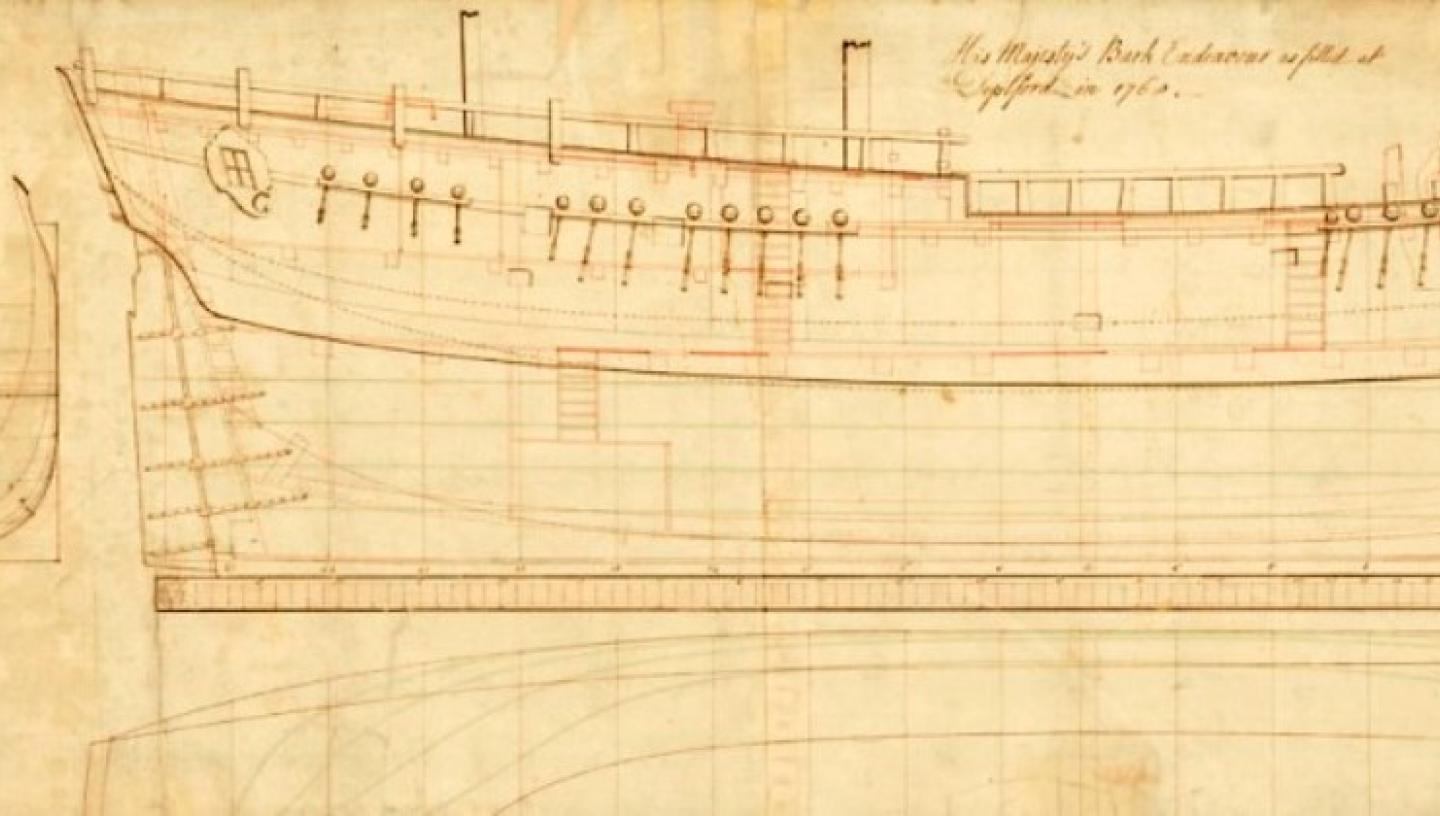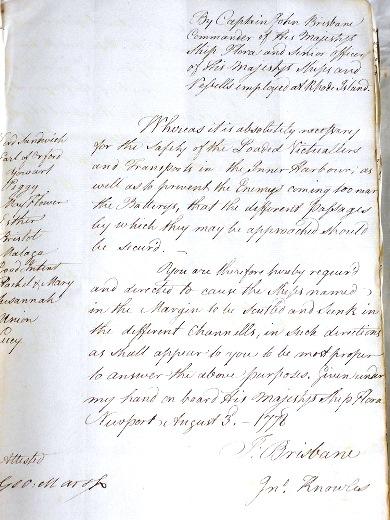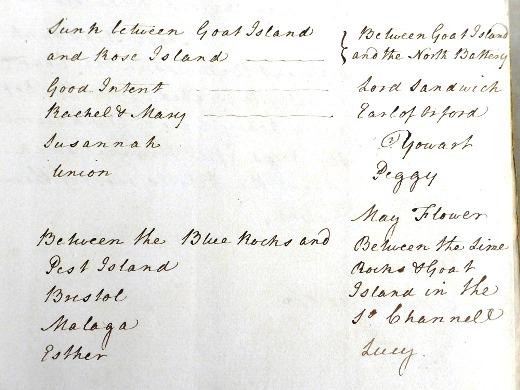
Essential Information
| Location | |
|---|---|
28 Jul 2016
Who would have guessed that the clue to solving a long running mystery about the final resting place of one of the world’s most famous ships lay buried in some fairly unassuming records in the Museum’s Caird Library?
Archaeologists from the Rhode Island Marine Archaeology Project announced earlier this year that they believed they have found the wreck of the Endeavour, the ship in which Captain James Cook sailed to Australia in 1769. The Endeavour was one of several ships scuttled in 1778 when American colonial troops surrounded and besieged the British in Newport. It formed part of the efforts to stop French ships in particular from entering the harbour to support the siege.
The Museum’s archive includes volumes of letters between the Admiralty and Navy Board from the 17th through to the 19th centuries. The information contained in these volumes covers a wide range of naval activity, mostly in relation to dockyards, ship building and ship maintenance. However, in amongst the more routine correspondence in volume ADM/B/198 (Jan–Apr 1779) are copies of three letters; one from the Navy Board to the Admiralty, one from Captain John Brice, and one from Lieutenant John Knowles to the Navy Board.

The first letter is dated 4 January 1779 and is by Philip Stephens, asking for the Admiralty’s advice regarding the payment of compensation for the ships which had been scuttled near Rhode Island. Copies of the other two letters are provided as proof that the ships were ordered to be scuttled by Brice (as Senior Officer of His Majesty’s Ships and Vessels at Newport/Rhode Island) on 3 August 1778, and that Brice’s orders were carried out by Knowles – in his letter dated 12 September 1778.
These two letters contain details regarding the ships that were scuttled including their names, how they were sunk, and exactly where they were sunk. There are 13 ships in total listed in the margin of Brice’s letter, one of which is the Lord Sandwich (see image). Cook’s Endeavour was sold into private hands in 1775 and renamed Lord Sandwich after the First Lord of the Admiralty at the time, Lord Sandwich. However, when the American Revolutionary Wars began a year later, she was leased back to the Royal Navy as a troop transport and was also used as a prison ship in Newport Harbour during the war.
In Knowles’s letter he indicates that the ships were burnt, weighed or ‘received a number of heavy shot through their hulls’. He also states that the Lord Sandwich was one of five ships sunk ‘between Goat Island and the North Battery'.
This information was enough to enable the marine archaeologists searching for the wreck to confirm that the Endeavour was one of the ships scuttled in Newport Harbour, and also to pin point the most likely location.

It was a sad end for what was to become one of the world’s most famous ships – Cook at the time was aboard HMS Resolution on his third voyage of exploration. He was presumably unaware of the fate of his previous ship and was to die in Hawaii only a few months later in February 1779.
Find out more about the Rhode Island Marine Archaeology Project
Stuart Bligh, Head of Research and Information